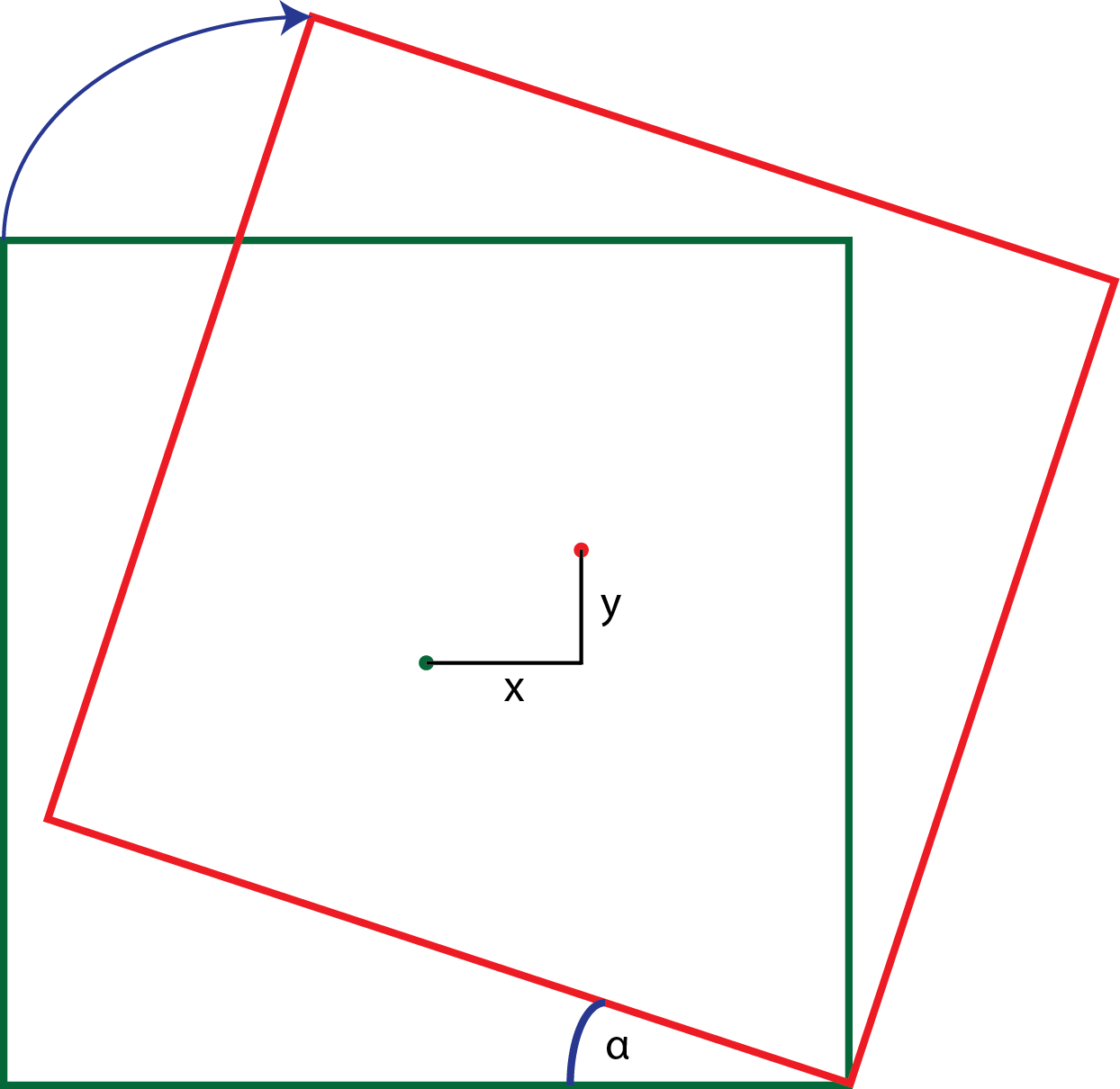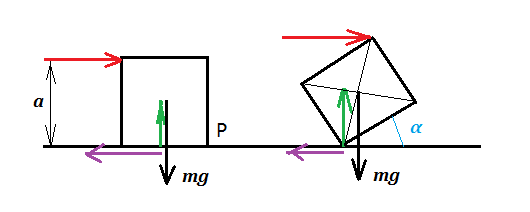I want to model a behavior of a rolling cube.
So far I managed to calculate the cube position for a given rotation angle. I need to rotate it around the center of gravity, thus I needed to calculate the horizontal and vertical displacement as a function of the current rotation angle.
When I apply a given rotation I get proper linear movement. Video.
To be honest I was suprised how complicated are equations for these values.
Now I figured it would be nice to give the rotation animation a realistic feeling. By that I mean that the first 45 degrees would be slow at first and accelerating over time, and the second 45 degrees of the rotation would be a free fall.
From what I remember I need to:
- Figure out what forces interact with the object. I know there must be gravity, external(moving) force and the friction.
- Find out what is the net force rotating the object.
- Calculate angular acceleration.
- Derive the equation for the angle as a function of time.
First of all, is this procedure correct?
Second of all, can you help me get started with the forces part. I don't really know where to begin, how to apply friction(I assume the rotation happens without any slide).
- Do I hook the gravity force in the center of gravity(I suppose yes)?
- Do I hook the moving force in the top-left corner or in the center of gravity? If in the corner, how do I take the torque into account?
- How to I divide these forces into components to calculate net forces in each direction?
I was playing with a carton of juice for half an hour, but I cannot figure out how these forces distribute.
I appreciate all the help.


